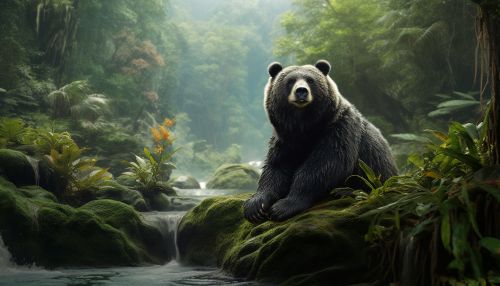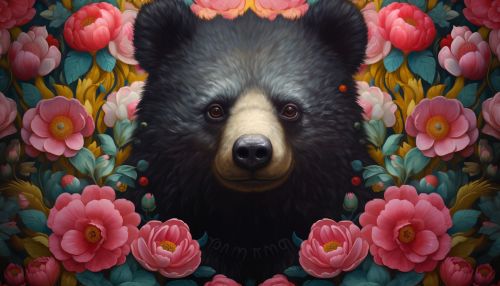Binturong
Taxonomy and Description
The Binturong (Arctictis binturong), also known as the bearcat, is a viverrid native to South and Southeast Asia. It is a member of the family Viverridae, which includes civets and genets. The Binturong is the only member of its genus, Arctictis.


The Binturong has a distinctive appearance, with a chunky body, a shaggy coat of black fur, and a prehensile tail. The tail is almost as long as the body and is used for balance and manipulation. The Binturong's face is broad and round, with small ears and large, brown eyes. The Binturong is one of the few mammals that has a prehensile tail, a feature it shares with New World monkeys.
Distribution and Habitat
Binturongs are widely distributed throughout South and Southeast Asia, including Bangladesh, Bhutan, Myanmar, Thailand, Malaysia, Indonesia, and the Philippines. They inhabit a variety of forest habitats, including tropical rainforests, secondary forests, and plantations. Binturongs are primarily arboreal, spending most of their time in the forest canopy.


Diet and Behavior
Binturongs are omnivorous, with a diet that includes fruits, leaves, birds, fish, and small mammals. They are particularly fond of figs and play an important role in seed dispersal. Binturongs are solitary animals and are primarily nocturnal, although they can be active during the day. They are known for their slow, deliberate movements and their ability to swim.


Reproduction and Lifespan
Binturongs have a gestation period of approximately 90 days, after which the female gives birth to 1-6 young. The young are born fully furred and open their eyes after about 45 days. Binturongs reach sexual maturity at around 2.5 years of age. In captivity, Binturongs have been known to live for up to 25 years.


Conservation Status
The Binturong is currently listed as Vulnerable on the IUCN Red List due to habitat loss and hunting for the pet trade. Efforts are being made to conserve the species through habitat protection and captive breeding programs.


Cultural Significance
In some parts of its range, the Binturong is considered a symbol of good luck. It is also featured in local folklore and mythology. Despite this, Binturongs are often hunted for their fur and meat, and are sometimes kept as pets.


